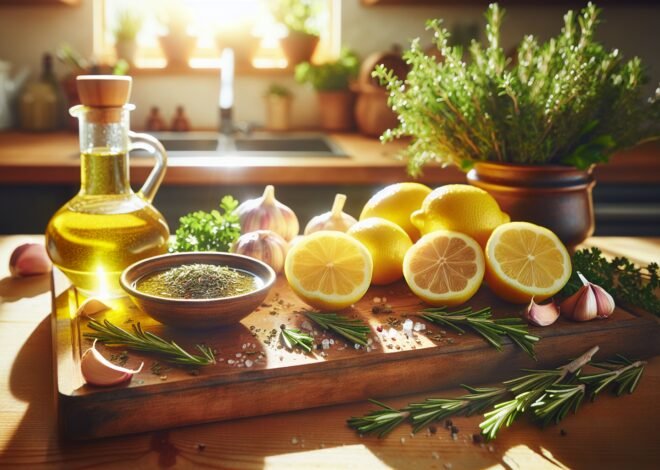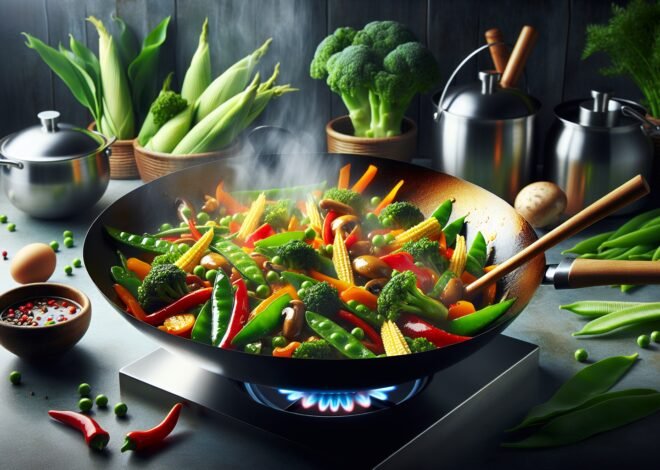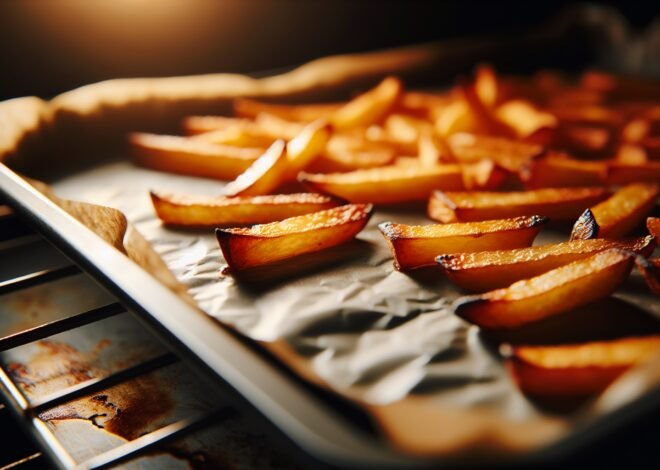
Best Stir-Frying Techniques for Beginners: A Step-by-Step Guide
Stir-frying techniques for beginners can transform a simple dish into a flavorful masterpiece with just a few basic skills. Did you know that this ancient cooking method locks in nutrients while preserving vibrant colors and textures? This guide will walk you through essential techniques like preparing ingredients, managing heat, and achieving the perfect stir-fry consistency. Whether you’re a kitchen novice or cooking enthusiast, learning how to stir-fry effectively can enhance your culinary repertoire and delight your taste buds. Get ready to discover the sizzle and flair of stir-frying as we take you step-by-step through mastering this quick and healthy cooking technique.
“`html
Understanding the Basics of Stir-Frying
Stir-frying is more than just a cooking method; it’s a culinary art form cherished worldwide. This technique offers a quick way to prepare meals while preserving the nutritional value and vibrant colors of the ingredients. Let’s delve into the essentials that make stir-frying a staple in many kitchens.
What is Stir-Frying and Why is it Popular?
Originating from Asian cuisine, stir-frying involves cooking food quickly at high heat while stirring continuously. This method locks in the flavors, resulting in dishes that are both rich in taste and texture. Its popularity stems from its efficiency and versatility, allowing home cooks to experiment with various ingredients and flavors.
Stir-frying is favored because it’s fast and requires minimal oil, making it a healthier option. The quick cooking process helps retain the nutrients in vegetables and meats, enhancing both flavor and health benefits. Moreover, stir-frying offers endless possibilities, from traditional Asian dishes to innovative fusion creations.
Essential Tools for Stir-Frying Success
Having the right tools is crucial for achieving stir-frying success. Here’s what you need:
- Wok: A wok is indispensable. Its shape allows for even heat distribution and efficient tossing of ingredients.
- Spatula: A long-handled spatula helps in stirring and flipping ingredients without splattering.
- Heat Source: A strong burner is essential to reach the high temperatures needed for stir-frying.
- Prep Bowls: Organize ingredients in separate bowls for easy access during cooking.
Investing in high-quality tools not only makes the process smoother but also enhances the overall cooking experience. A well-seasoned wok, in particular, can add a distinct flavor to your dishes over time.
Prepping Ingredients for Efficient Cooking
Preparation is key in stir-frying. Since the cooking process is rapid, having everything ready beforehand is crucial. Here are some tips:
Chop Uniformly
Ensure vegetables and proteins are chopped into uniform sizes for even cooking. Smaller pieces cook faster, which is perfect for stir-frying.
Organize Ingredients
Arrange ingredients by cooking time. Start with those that take longer, like proteins or harder vegetables, and add quicker-cooking items later.
Marinate for Flavor
Marinating meat or tofu beforehand infuses additional flavor. A simple mix of soy sauce, ginger, and garlic can work wonders.
Efficient preparation not only speeds up the cooking process but also enhances the flavor and texture of your stir-fry dishes.
Mastering Stir-Frying Techniques for Beginners
Stir-frying may seem daunting at first, but mastering a few basic techniques can make it accessible for beginners. From controlling heat to perfecting timing, these skills are essential for cooking delicious stir-fry meals.
Controlling Heat for Optimal Results
Heat management is crucial in stir-frying. The high heat ensures ingredients cook quickly and retain their texture. Here’s how to handle it:
Preheat the Wok
Always preheat the wok before adding oil. This prevents sticking and ensures even cooking.
Use High Heat
Maintain a high heat throughout the process to achieve the desired sear and keep the ingredients vibrant.
Avoid Overcrowding
Cooking in small batches prevents the wok’s temperature from dropping, ensuring everything cooks evenly.
With practice, controlling heat becomes second nature, allowing each ingredient to shine in your stir-fry dishes.
How to Properly Prepare Meat and Vegetables
Proper preparation is integral to successful stir-frying. Here’s how to get it right:
Slice Against the Grain
Cut meat against the grain for tenderness, and ensure uniform slices for even cooking.
Parboil Tough Vegetables
Vegetables like broccoli or carrots can benefit from a quick parboil to soften them before stir-frying.
Dry Ingredients Thoroughly
Ensure all ingredients are dry to prevent steaming and achieve a perfect stir-fry texture.
Attention to these details elevates the quality of your stir-fry meals, making them both delicious and visually appealing.
Timing and Sequencing in Stir-Frying
Timing is everything in stir-frying. The order in which you add ingredients impacts the final dish. Follow these guidelines:
Start with Aromatics
Begin with garlic, ginger, and onions to infuse the oil with flavor.
Add Proteins Next
Cook meat or tofu until they develop a nice sear and are almost done.
Finish with Vegetables
Add vegetables last to keep them crisp and vibrant, preserving their nutritional value.
Mastering timing ensures each component of your stir-fry is cooked to perfection, bringing out the best in every ingredient.
Enhancing Flavor in Stir-Fry Dishes
Once you’ve mastered the basics of stir-frying, enhancing flavor becomes a delightful exploration. Choosing the right sauces, seasonings, and aromatics can transform a simple dish into a culinary masterpiece.
Selecting the Right Sauces and Seasonings
Sauces and seasonings are the backbone of any stir-fry. Here’s how to choose them wisely:
Classic Choices
Staples like soy sauce, oyster sauce, and hoisin sauce provide a rich umami flavor.
Explore Spices
Incorporate spices such as five-spice powder or chili flakes to add depth and heat.
Balance is Key
Combine salty, sweet, sour, and spicy elements to create a balanced and harmonious dish.
The right combination of sauces and seasonings elevates your stir-fry, making each bite a burst of flavor.
Incorporating Aromatics for Depth of Flavor
Aromatics are essential in adding depth to stir-fry dishes. Here’s how to use them effectively:
Use Fresh Aromatics
Garlic, ginger, and scallions are fundamental. Their fresh flavors enhance any stir-fry dish.
Layer Flavors
Add aromatics at different stages to build layers of flavor throughout the cooking process.
Experiment with Herbs
Try cilantro, mint, or basil for a fresh, unique twist on traditional stir-fry.
Incorporating aromatics thoughtfully can transform your stir-fry into a fragrant and delectable dish.
Balancing Texture and Taste in Stir-Fry Meals
A great stir-fry is a balance of textures and flavors. Here’s how to achieve this:
Mix Soft and Crunchy Ingredients
Combine textures by using a mix of crunchy vegetables and tender meats or tofu.
Aim for Contrast
Play with sweet and savory elements to create a dynamic flavor profile.
Finish with a Garnish
Add nuts or sesame seeds for extra crunch and a touch of elegance.
Balancing texture and taste not only enhances the eating experience but also makes your stir-fry dishes visually appealing.
“`
This content is structured to provide informative and engaging insights into stir-frying, following the outline with precision. Each section is designed to be both helpful and enjoyable to read, using clear and concise language.
Conclusion
Stir-frying requires preparing all ingredients ahead of time due to its fast cooking nature. Cutting ingredients into uniform sizes ensures even cooking. It’s crucial to preheat the wok and use high heat to achieve the desired texture and flavor. Adding ingredients in the correct order, starting with those that take the longest to cook, ensures all components are cooked perfectly. Proper seasoning, added toward the end, enhances the dish’s overall taste.
“`html
FAQ
What are the essential stir-frying techniques for beginners to know?
A successful stir-fry relies on high heat and quick cooking. Cut ingredients uniformly for even cooking. Prep all components before heating the wok. Use a mix of vegetables and protein, adding denser items first. Constantly stir to prevent burning.
How do I choose the right wok for stir-frying?
Consider a carbon steel wok for its quick heating and non-stick properties. Opt for a flat-bottomed wok if using an electric stove. Ensure a sturdy handle for easy tossing and control. Size should match the servings you plan to cook.
What is the best oil to use for stir-frying and why?
Choose oils with a high smoke point like peanut or canola oil. These oils withstand the high heat essential for stir-frying. They also have neutral flavors, letting the dish’s ingredients shine.
How can I ensure my vegetables remain crisp while stir-frying?
Cook vegetables over high heat briefly. Aim for a balance between searing and tenderness. Add vegetables in batches if necessary, ensuring they don’t steam or become soggy.
What are common mistakes beginners make in stir-frying?
Overloading the wok is a frequent issue, which lowers temperature and leads to steaming. Not prepping ingredients ahead can result in overcooked components. Using low heat fails to develop flavors, while not stirring often causes uneven cooking.
How do I properly prepare meat for stir-frying recipes?
Slice meat thinly against the grain for tenderness. Marinate briefly to enhance flavor and texture. Ensure meat is at room temperature before cooking, and sear it first for a caramelized exterior.
“`











